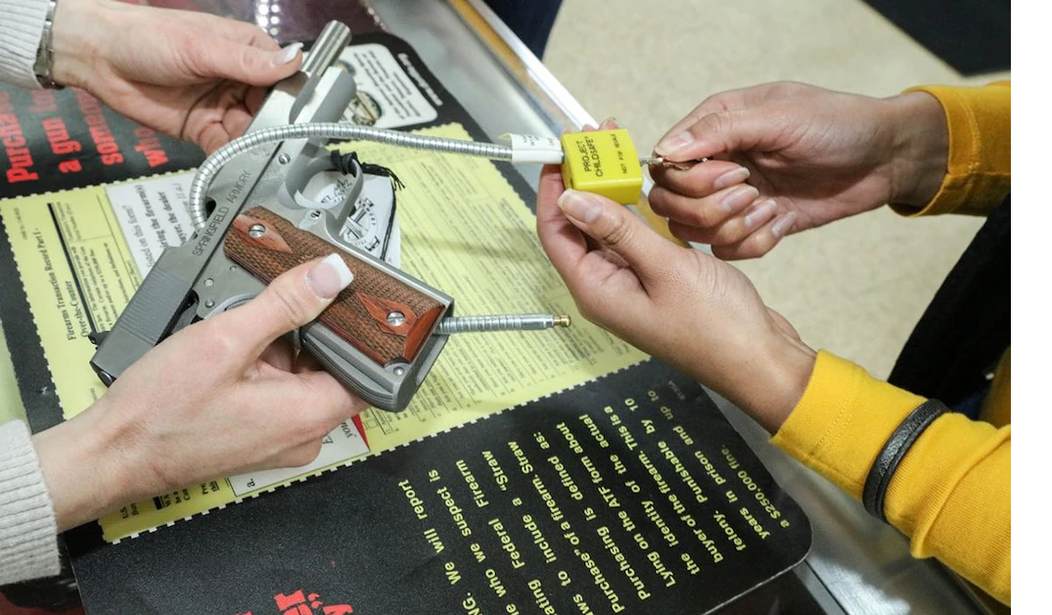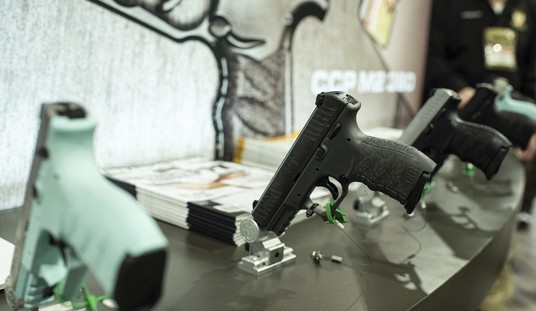The other week I reported on a study that talked about the perceptions, habits, and understanding of gun laws and firearm issues in Colorado. One of the key talking points that was parroted by the alleged unbiased researchers was the importance of “safe storage.” Tom recently reported about the White House drooling out some safe storage rhetoric too. And, The Trace just rolled out an interview with the executive director of the New Jersey Gun Violence Research Center, talking about – you guessed it, their definition of safe storage.
I’ve had a few chats with Dr. Michael D. Anestis over the years. To his credit, he has always given me the time of day when I’ve reached out for comment or for an interview. I could sit and have lunch, coffee, or cigars with the guy without issue…undoubtedly. As long as we stay in our lanes. And that’s kind of a good way to frame what these doctors should be doing.
In one of our casual conversations I mentioned legal gun owners who would carry their firearms in the grocery store as being a normal thing. Dr. Anestis’ attitude towards that comment was that he was not sure it would be “appropriate” for people to carry their firearms in grocery stores. That was before the massacre in a Buffalo, New York grocery store. I doubt he’s changed course on his line of thinking – but that is the line of thinking we’re dealing with.
It seems like these researchers, whom I explored and talked about the other week, never find anything liberty-related “appropriate.” The point-blank question I think we, as Second Amendment supporters, deserve an answer from these “non-policy” people is, is it appropriate for a person to use a firearm in self-defense or the defense of others?
I don’t think we can coax an answer out of the “non-policy” people at the New Jersey Gun Violence Research Center or the Colorado Firearm Safety Coalition. Their funding would go bye-bye if they conceded that it’s okay to self-defend.
The Trace reported some of the same tired points that Anestis and his ilk have repeated over and over again. The anti-gun think tanks – excuse me, unbiased “researchers” – embrace the alleged mantra of the Third Reich, “Repeat a lie often enough and it becomes the truth.” I don’t think the light being cast on this gaslighting would be appreciated by the anti-gun cabal, but light is the best disinfectant.
“There’s an imbalance in the messaging: most Americans know little about the risks that come with unsecured firearms and suicide,” said Michael D. Anestis, lead researcher on the study and a clinical psychologist at Rutgers University.
That imbalance in “messaging” goes back to a standard we need to be aware of – the so-called “credible messenger.” The anti-gun cabal will put whoever they can on the take, as long as they’ll put forward their talking points. Waiver from talking points or be actually honest, I dare say, and you’ll find yourself shut out.
Ask me how I know…It’s funny how quickly you can go from being acceptable enough to tweet things out to, gettin’ those tags and hashtags, to persona non grata, because you tell your readers the truth. The truth being for them to go with their gut on not trusting the medical field when it comes to firearms. Can anyone blame me given their track record?
One of the questions from The Trace of Dr. Anestis, squarely highlights my point about their standard, “Do you have any final thoughts on how researchers, firearm owners, and the gun industry can come together on fact-based credible messaging?” Anestis’ reply:
This manuscript, and the work that we do, are not geared toward fighting with firearm manufacturers. They’ve made a lot of money selling firearms by capitalizing on fear. Due to the messaging of fear, it can be difficult to communicate the notion that secure storage is necessary for protection, more so than having ready access to a firearm. Any acknowledgment that a firearm in a home could be a threat punctures that narrative by highlighting that the firearm itself is dangerous when the message has been: firearms protect against danger.
We need to think about how we can shift the national narrative again — it’s not about threatening people’s rights or saying guns are bad, but being honest about the risks.
Honest? Unfortunately, honesty is not something that we can attribute to these groups. As was the case in the Colorado study cited above, they were less than sincere in their transparency. To recap, in all the reports and data on the study they did, no number of participants was listed. I called that insincere and asserted it lacks academic integrity.
In the spirit of being honest and transparent, I did reach out to the lead on that study, Dr. Erin Kelly. I asked Kelly for the number of participants as well as some data on their methodologies. Dr. Kelly did get back to me.
Hi John,
Thanks so much for writing and sorry for my delay thus far. I hope to get back to you this afternoon – was off yesterday (sorry – set out of office to the morning on Thursday) and then in meetings today. But wanted you to know I will get back to you!
Also, if easier to chat at all, let me know – can provide you my number, too. But I will plan to send email this afternoon unless you say otherwise!
Erin
After that, radio silence. The email never came. I don’t know if her colleagues got to her and let her know that I’m nowhere near a credible messenger that’s useful to them, or if she plain forgot. But I heard nothing further.
It’s okay that I did not get the numbers from her though. I managed to get a good amount of information from one of my contacts who was privy to the data and presentation on the program.
The study Dr. Kelly did involved 1,520 participants and “the sample was weighted to be statistically representative of the state and regions.” Some of the “facts” Dr. Kelly presented were:
- Those who have access to firearms are at increased risk of theft and injury and death (due to presence and lethality).
- Secure storage of firearms can prevent unauthorized access and help save lives.
- Decisions on how to store depend on personal circumstances and home context
Something stuck out in the materials I was provided that caused me to re-explore this topic . On a slide entitled “Messengers That Led to More Secure Firearm Storage,” there’s a data point that’s worth discussing.
In all the different “messenger” categories that Dr. Kelly et.al. mentioned might be credible, the numbers dropped significantly in some of them. Just under half of the messengers listed, 5 out of 11, had the following notation associated with them “* Calculations for these values may be unstable as n<30.”
How can any so-called “researcher” return a set of data with numbers less than 30? What happened to the other nearly 1500 participants? This is beyond sloppy. Do other researchers take these kinds of results seriously?
What else stuck out? One statistic that must make the anti-gun cabal giddy beyond belief is that 51% of the people polled in the Colorado study think that it’s “appropriate for health care providers to discuss firearm storage.” And of three points concerning the “implications” of this study, one of them was “Use the right message with the right messenger.”
If a medical practitioner is not trained in firearms and firearm safety as an expert, they are operating outside their scope. Their insurance company would probably love to know about such boundary violations and the work they do outside their expertise.
Dr. Anestis flippantly mentioned that the current narrative is that “firearms protect against danger.” And in the next breath, “We need to think about how we can shift the national narrative again.” For him to double down and say, “it’s not about threatening people’s rights” is just downright insulting. Piece together the big picture.
The anti-gun cabal openly says that it’s the wrong mentality to think firearms protect against danger.
Here’s a message for gun-owning America…Do not listen to these “professionals.” They’re paid for and bought by anti-gun politicians and progressive forces. Who do you think funds these shills?
The latest tide change is, for whatever reason, all about what they consider “safe storage.” These individuals, many of whom somehow squeezed “Doctor” in front of their names, will continue to repeat lies from debunked studies and tell Americans they shall store their firearms unloaded, in a locked container, and ammunition in a separate locked container.
If you don’t find that storage message to be credible, then good. Go with what’s right for you. The right way to store firearms is an individual choice and responsible storage is what we should be after. That means a nightstand drawer might be right for one family or household, but unloaded and locked in a safe is right for another – outside any applicable unconstitutional laws, of course.
These non-policy folk are going to turn around and say one day that there’s support for xyz measure. Or that this is what the data says. Luckily our civil liberties don’t hang in the balance of opinion or bunk statistics. Anestis, Kelly, et.al. can get their funding and overinflated salaries until the sun comes up, but eventually even they’re going to have to admit there’s no real credible messenger to convince people to give up their rights.
**Update** I did receive correspondence back from Dr. Erin Kelly after this article posted. Dr. Kelly’s lack of a response was not an intentional dismissal on her part. Dr. Kelly’s response to my query is as follows:
In response to your questions, all of the information is available on the COFIPS website, under the About section, and then you can drop down from the 2023 COFIPS administration to read more. These should be the specific answers to your questions:
- Timeline: Data collected from May 9-June 7, 2023
- Data collection: The survey was administered by a marketing research firm (Ipsos), who collected responses via an existing survey panel and through recruitment of participants who represent the diverse demographics of Colorado residents.
- Here is more information on their existing survey panel, called KnowledgePanel, and the Calibration Methodology used: For situations where a study requires a very large sample or targeting of small subpopulations, we have developed KnowledgePanel Calibration that blends our sample with non-probability sample while reducing known biases associated with such samples. When calibrated, the combined sample sources—KnowledgePanel and opt-in online samples—result in higher accuracy over the use of an opt-in sample alone.
- Participation: A sample of 1,520 Coloradans completed the survey; the information they provided was weighted to represent adults in Colorado.
**End Update**








Join the conversation as a VIP Member